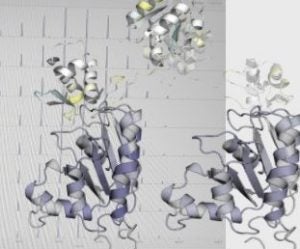Structural Proteomics
Structural proteomics combines protein chemistry with high-resolution mass spectrometry analysis to characterize the motions and structures of proteins, protein-ligand complexes, and macromolecular protein complexes. Techniques used in structural proteomics include protein crosslinking, hydrogen/deuterium-exchange (H/D-X) Mass Spectrometry, amino acid specific covalent labeling, and native ion-mobility mass spectrometry. As stand-alone techniques, structural proteomics offer the means to interrogate the structures of proteins and protein systems that are not amenable to other techniques like NMR or X-ray crystallography. Structural proteomics can also reveal protein motions important to biological and pathological processes and can complement other traditional structural and biophysical assays.
For structural proteomics analysis, we offer the following services:
- H/D-X Mass Spectrometry: MS data is collected on our fully automated system using the Synapt XS Ion-Mobility mass spectrometer. We have successfully characterized H/D-X in protein systems ranging from 15 kDa to over 600 kDa (>98% coverage) under myriad of conditions. The power of this technique is readily apparent when the H/D-X profiles for proteins or protein complexes in the presence or absence of inhibitors, allosteric effectors, other proteins are compared in differential H/D-X experiments. Since the Synapt XS has both CID and ETD capabilities, we can determine H/D-X to amino acid residue resolution. Data is analyzed using DynamX or MassSpecStudio.
- Native ion-mobility Mass Spectrometry: Understanding the changes in the distributions of protein conformations in the native state vs. a perturbed (i.e. unfolded, ligand added, protein partner added) state is important to understanding the thermodynamics underlying these changes. Using anti ion-mobility MS and the Synapt XS, we use collisional cross section and dift time analysis to determine these relative populations. Additionally, native IM-MS can be used to determine the affinity of protein-protein or protein ligand interactions. Data is analyzed using DriftScope and Skyline.
- Crosslinking Mass Spectrometry: There are multiple uses for crosslinking mass spectrometry; these include locking protein complexes in place to probe interaction sites, locking protein conformations into place to “capture” different conformations trapped in native gels, or generating distance restrains for computational modelling using crosslinkers of varying length and chemical reactivity. Using a wide variety of chemical crosslinkers and either the Orbitrap Q-Exactive Plus or Synapt XS for MS analysis we then digest the proteins and use software specifically designed to look for crosslinked peptides (i.e. pLINK2).
